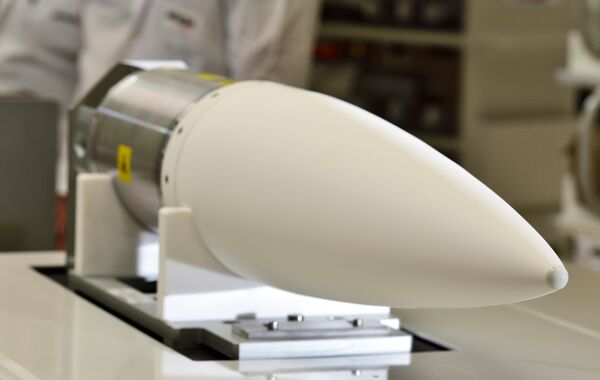
MBDA Italia's Fusaro facility has developed a new advanced ceramic missile radome. (MBDA)
MBDA Italia has concluded development of a new advanced ceramic manufacture process for radio frequency (RF) missile radomes claimed to offer improved strength and environmental performance compared with conventional cast silica structures.
Known internally as NIMAS, the patented material process is designed to form a high-strength, erosion-resistant structure suitable for both supersonic and hypersonic applications. Work to mature and prove the new advanced ceramic radome has been undertaken at MBDA's Fusaro site near Naples, which is established as the key radome technology centre within the MBDA group.
Fitted to the front end of the missile, a radome must afford the mechanical strength to protect the sensitive RF antenna from airflow and environmental disturbances and cope with the aerodynamic and thermal loads encountered during flight. At the same time, it must be manufactured to have a high level of RF ‘transparency' to allow electromagnetic waves to pass through.
Patented by MBDA Italia in 2012, the NIMAS radome manufacture technique uses silicon nitride – a low-density fine ceramic with very good thermomechanical properties owing to its interlocking microstructure – to create an ionic bonded crystalline structure that is very hard and retains its strength at high temperatures. The manufacture process involves the advanced ceramic and oxides blended together, isostatically pressed into the desired shape, and then sintered.
While manufacture cost is broadly similar to that of a conventional cast silica process, the NIMAS radome has demonstrated significantly improved performance, according to Giacomo Sabino, MBDA Italia's director of engineering, research, and technology. “From a radio frequency point of view, the performance [of the radome] is outstanding,” he told Janes
Looking to read the full article?
Gain unlimited access to Janes news and more...







